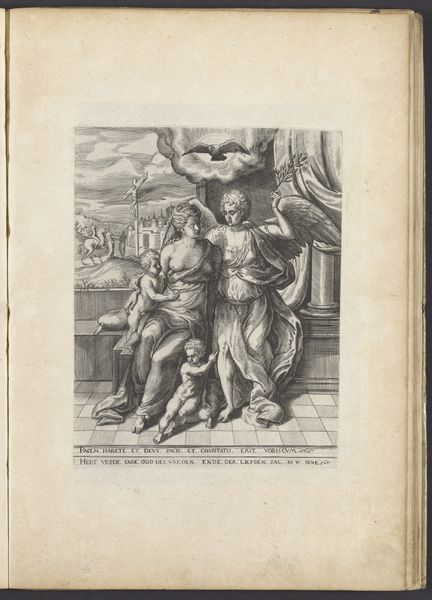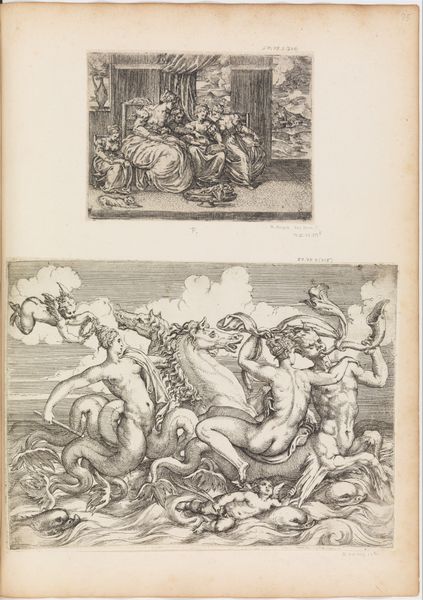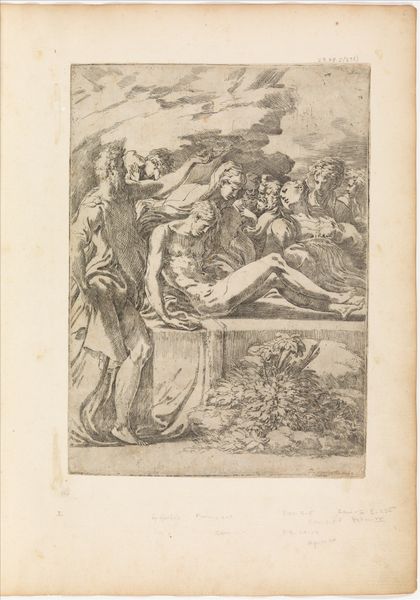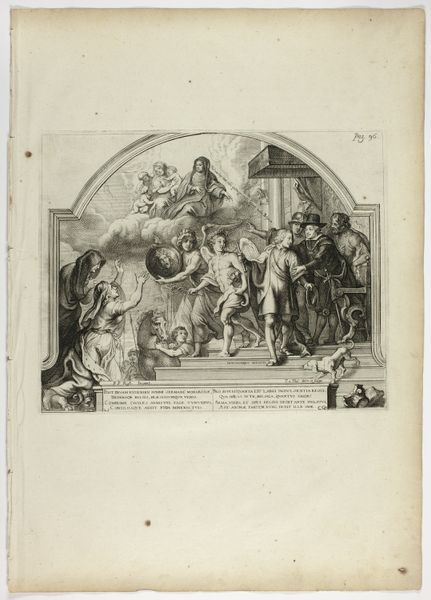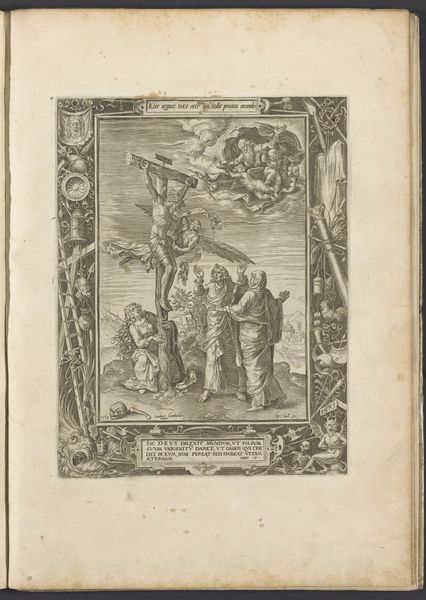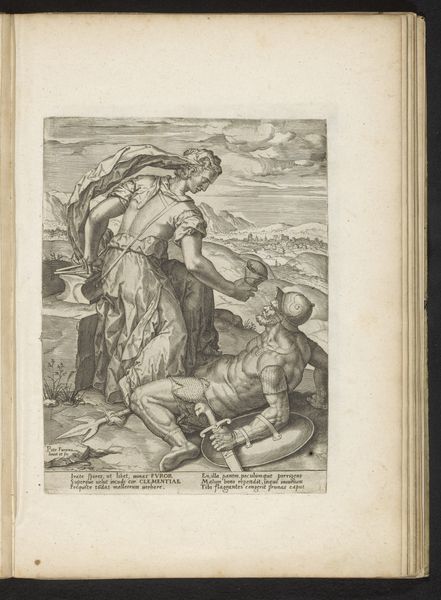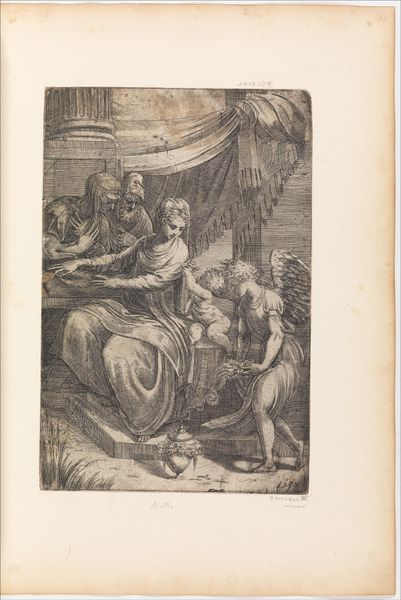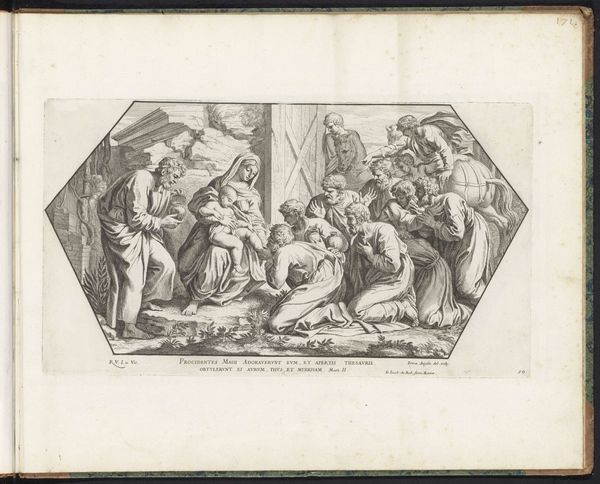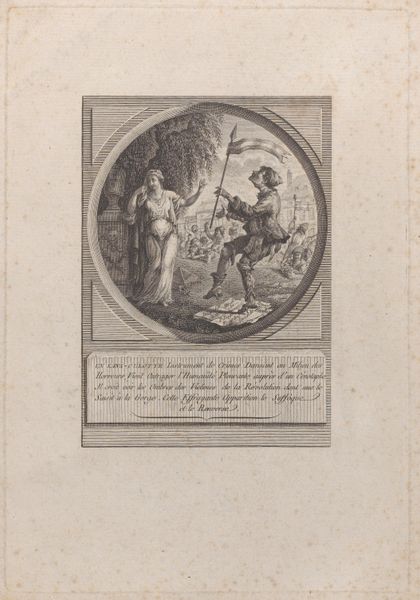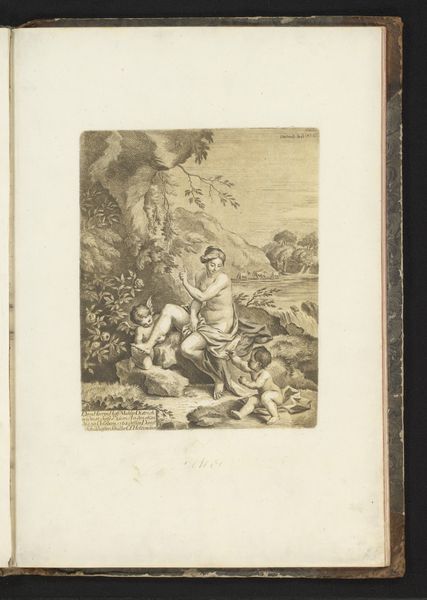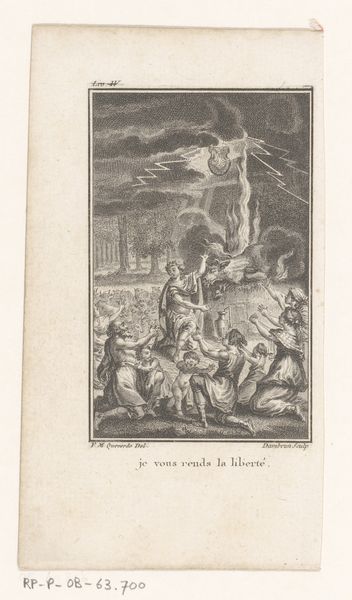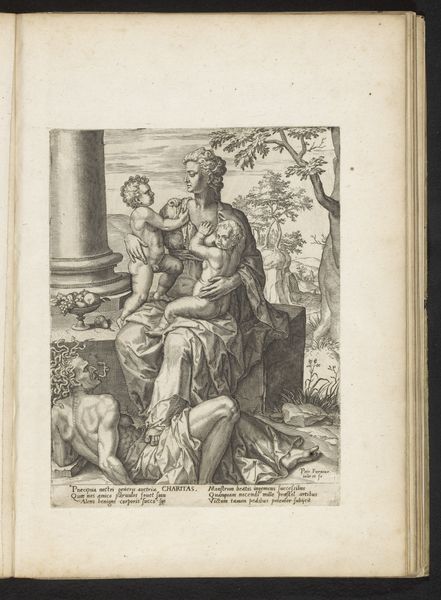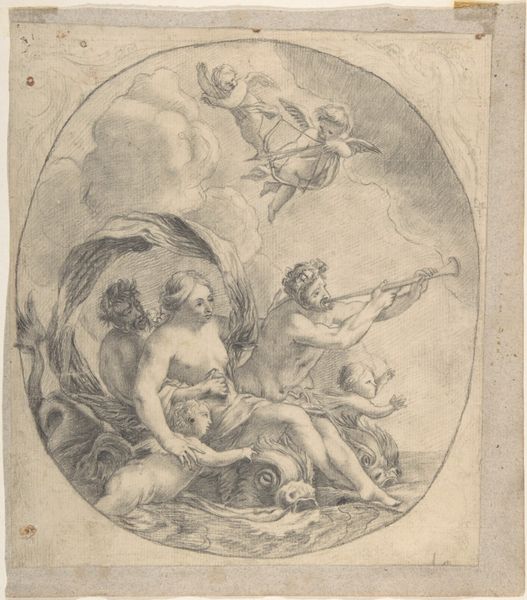
Door Faam gedragen portret van Jean Jacques Charron bij drie personificaties c. 1650 - 1676
0:00
0:00
#
pencil drawn
#
aged paper
#
toned paper
#
pencil sketch
#
old engraving style
#
tea stained
#
personal sketchbook
#
coffee painting
#
pencil art
#
watercolor
Dimensions: height 195 mm, width 137 mm
Copyright: Rijks Museum: Open Domain
Curator: Here we have an engraving titled "Door Faam gedragen portret van Jean Jacques Charron bij drie personificaties," dating roughly from 1650 to 1676. Editor: It has the feel of a monument—austere, a bit like old money, don't you think? All those allegorical figures crammed together in grayscale seem imposing. Curator: Note the printmaking technique, perhaps etching or engraving. The crisp lines create a dense, almost overwhelming visual field. It’s crucial to understanding the artwork’s intent, highlighting texture and detail through the calculated build-up of line work. Editor: Right, and you can almost feel the pressure of the printing press involved. But I’m thinking also about the kind of paper it’s on. It seems relatively coarse. It wasn't meant, necessarily, to mimic painting's illusionism, but to create multiples, almost as an accessible record of power. Curator: Power is definitely a central theme here. Observe the triumphal arrangement. Fame supports Charron's portrait, while the three personifications likely represent virtues or achievements associated with him. This construction signifies Charron’s perceived virtues elevated within society. Editor: And those bare shoulders on figures...were they considered "virtuous" according to the production standards and viewing sensibilities of the period? Those bodies, those classical references—everything works toward reinforcing this idea of social order. Curator: Precisely. By visually aligning Charron with classical ideals, the artist aims to legitimize his status. Compositionally, it evokes both respect and perhaps a slight sense of unease through its rigorous structure. Editor: A rigid kind of self-display is it not? Seeing that etching plate and the manual labor makes me consider who benefited from his portrait's circulation and how the act of disseminating the image bolstered economic control. It leaves you contemplating more than the art itself— the wider societal mechanisms involved. Curator: Yes, definitely aspects to consider that reveal a very specific historical perspective within an intricately constructed artistic creation. Editor: Absolutely, viewing this, reminds me that visual representation goes hand-in-hand with the means and the agenda that brings it into the public sphere.
Comments
No comments
Be the first to comment and join the conversation on the ultimate creative platform.
